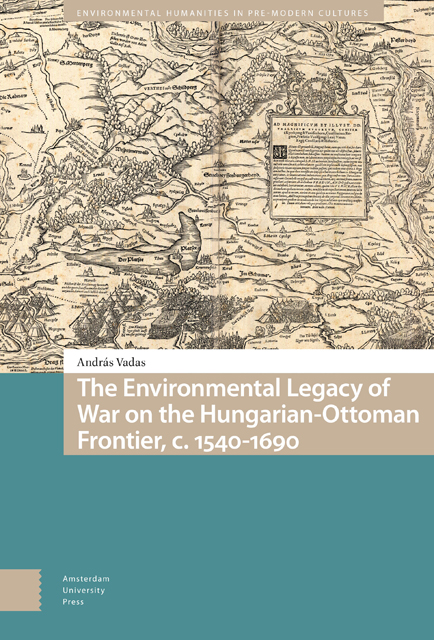Book contents
- Frontmatter
- Dedication
- Contents
- List of Figures
- Note on Names
- Acknowledgments
- 1 Introduction
- 2 From the Center to the Frontier: The Environment of Central Transdanubia in the Early Modern Period
- 3 A Century of Water?: The Rába Valley in the Seventeenth Century
- 4 From Endless Forests to Meadows and Wastelands?: What Happened to the Forests Along the Border?
- 5 Conclusions
- Appendices
- Bibliography
- Index of Geographic Names
- Index of Personal Names
4 - From Endless Forests to Meadows and Wastelands?: What Happened to the Forests Along the Border?
Published online by Cambridge University Press: 17 October 2023
- Frontmatter
- Dedication
- Contents
- List of Figures
- Note on Names
- Acknowledgments
- 1 Introduction
- 2 From the Center to the Frontier: The Environment of Central Transdanubia in the Early Modern Period
- 3 A Century of Water?: The Rába Valley in the Seventeenth Century
- 4 From Endless Forests to Meadows and Wastelands?: What Happened to the Forests Along the Border?
- 5 Conclusions
- Appendices
- Bibliography
- Index of Geographic Names
- Index of Personal Names
Summary
Abstract
The chapter analyzes the relationship between the Hungarian-Ottoman wars and the loss of forests in Transdanubia (western Hungary). It provides an estimate of the most important ways in which forest resources were used in order to investigate whether or not the forest loss can be linked to the Ottoman presence in the Carpathian Basin. The most important spheres of forest-related consumption – fortification works and the production of war materiel – are considered and contrasted with other types of forest-resource use.
Keywords: Environmental history, Kingdom of Hungary, forest history, earth and wood fortifications, war materiel
As argued in Chapters 2 and 3, the waterscape of the frontier area between the Ottomans and the Hungarians in the Carpathian Basin was in all likelihood significantly transformed in the sixteenth and seventeenth centuries. However, as is clear from the sources used in Chapter 2 as well as from the existing scholarly literature, water was not the only natural resource heavily used in wars in pre-modern times – so were forests. The main question addressed in the present chapter is how forest resources in the Carpathian Basin were influenced by the Ottoman wars. As discussed in the introduction, the few works that do consider the impact of pre-modern wars on the environment refer to its severe impact on forest resources. Most of the scholars attribute much more importance to forest resources in pre-modern warfare than to rivers and waterscapes. The rather traditional narrative of historians also follows this view. Below, I discuss the ways in which the use of forests in this period can be approached to test the validity of the assumption that forest resources in the lowland and hilly areas of the Carpathians became scarce in the period of the Ottoman wars. First, however, I provide a summary of the most important points that scholars have made about early modern war-related forest consumption in the Carpathian Basin
4.1 Forest Resources in the Carpathian Basin in Pre-Modern Times – Endless or Scarce?
The political change of the sixteenth century discussed in section 1.3 significantly transformed the spatial and economic structure of the Carpathian Basin. It deeply impacted the settlement network and farming on the Great Hungarian Plain as well as in Transdanubia.
- Type
- Chapter
- Information
- Publisher: Amsterdam University PressPrint publication year: 2023

